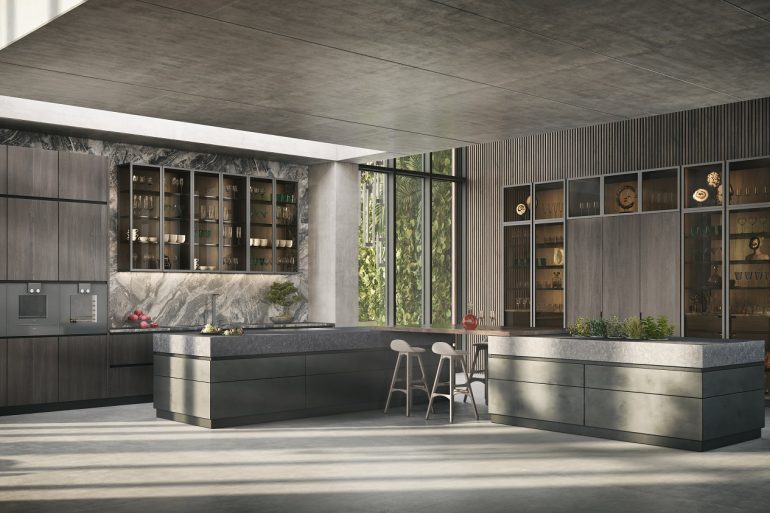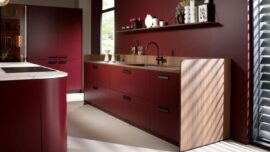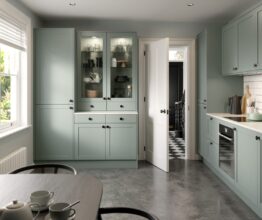Smallbone’s latest kitchen collection takes its influences from the Modernist movement, referencing the pared-back architecture and interiors of the 1960s and 70s. Hand-selected oak veneers, deep Belgian fossil stone counters and a mellow grey finish deliver a tailored yet organic feel.
‘Revisiting the ideas of early twentieth-century pioneers, including Le Corbusier, was one of the starting points for this collection,’ says Smallbone’s Ideation Director, Iain O’Mahony.
‘We were inspired by the discipline of Modernism, with its acute appreciation of form and function and its insistence that no detail should be superfluous, but should instead play its part.’ A modular arrangement means that the collection works equally well showcasing one or two standalone pieces, or as a harmonious whole when every element is combined.
The concept of clean, geometric forms and open, efficient space is captured in the streamlined, luxurious look of the collection, defined by tonal layers of timber, metal and stone. Toughened, tinted glass panels are framed in custom metal, while subtle internal lighting and elegant timber and glass shelving completes the mood.
The guiding principles of pared-back design have of course been given an inimitable Smallbone twist, reflective of its reputation as a heritage brand rooted in the tradition of cabinet making. Undercut top edges to drawers and doors negate the need for handles, creating pleasing natural shadow lines; glazed cabinets introduce jewel-like pockets of storage that re-affirm the luxury of space, and precision-cut apertures accommodate handmade, infinitely customisable walnut drawer boxes. Mitred drawer fronts maintain the sleek, uninterrupted lines.
‘Smallbone’s legacy will always be tied to complementing great architecture and adorning beautiful living spaces,’ says O’Mahony. ‘Our ethos is rooted in craftsmanship and our driving force is innovation. That means creating spaces that deliver both impact and longevity. The Modernist collection embodies our passion for brave, forward-thinking design.’





